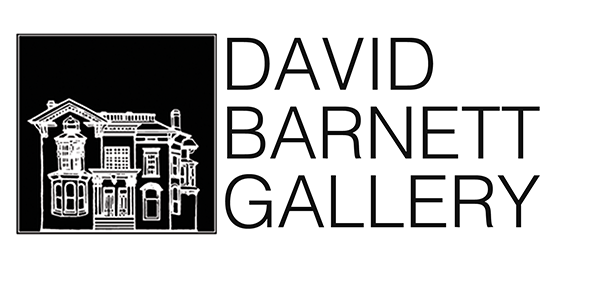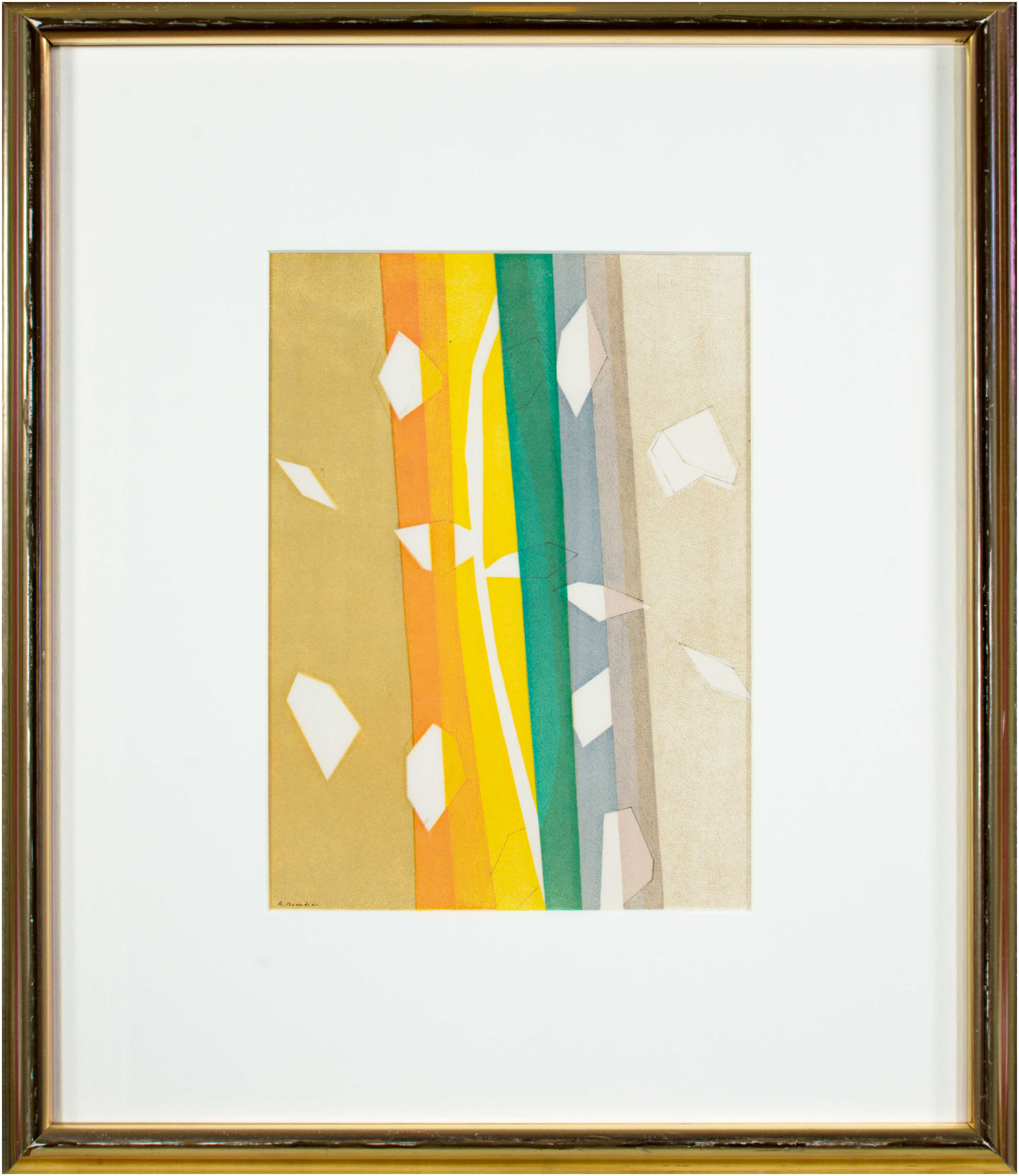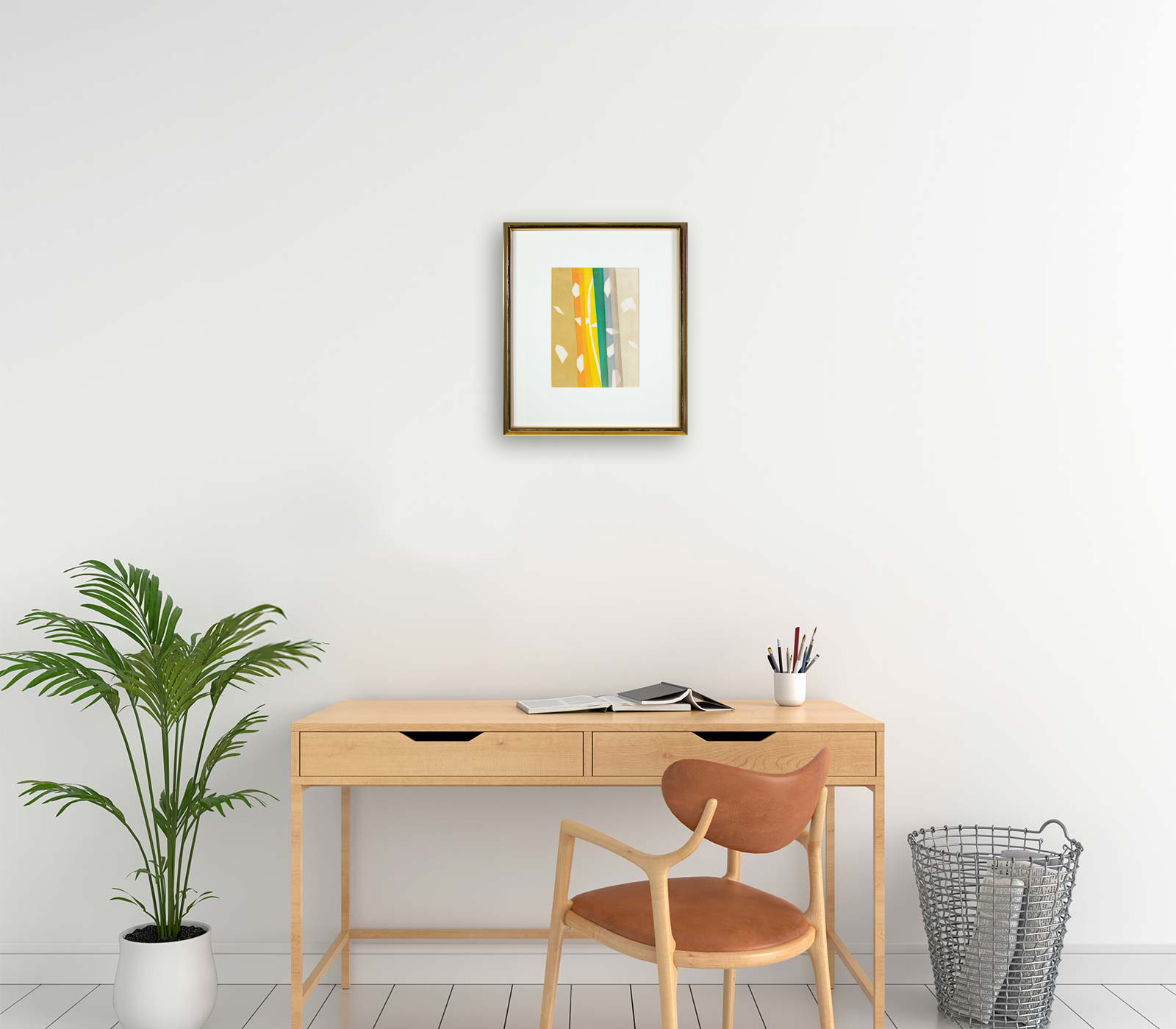

Pour Daniel-Henry Kahnweiler - Falling Leaves
Artist: Andre Beaudin
Price:
$1,160.00
Medium: Prints


More Details
Creation Date: 1964
Materials: Original lithograph
Dimensions: 21" x 18" x 1"
Finish: Framed
About the Item: Edition Number 71. Edition Size 200

About The Artist
Andre Beaudin (b. Mennecy, Seine-et-Oise, 3 Feb 1895; d. Paris, 6 June 1979) was a painter, sculptor, graphic artist and designer. He was influenced by the Cubism of Juan Gris, and the Surrealism and decorativeness of Matisse. His poetic style is characterized by clean colors and clear structures. In his sculptures he stresses Cubist forms. His series of horses are important. Houses, rivers, and bicycles are themes which influenced a large part of his art his whole life. He illustrated books for the Surrealists, participating also in this movement. Beaudin attended the Ecole des Arts Décoratifs, Paris, from 1911 until he joined the army in 1915. After World War I, he devoted himself primarily to painting. In 1922 he met Juan Gris with whose encouragement his early Matisse-influenced rhythmical compositions acquired greater stability. In the late 1920s he was promoted by Tériade as a successor to the Cubists, with such works as "Mirror" (1929; Paris, Centre Pompidou), in which a highly simplified figure and its mirror-image are defined by patches of flat color and fragments of linear contrast, and by the 1940s he was seen as one of the major representatives of the Ecole de Paris. In the 1950s, his earlier predilection for curvilinear shapes gave way to a more angular and dynamic geometry, as in "The First Race" (1952; Paris, Centre Pompidou). His subject matter was taken from daily life, with marked preferences for the nude in movement, as in "Games in the Forest" (1934; Paris, Centre Pompidou), and for animals, particularly horses, cows and birds. Each was reduced to a sign-like essence, for Beaudin subordinated narrative content to pictorial structure while retaining a recognizable image. He was always more concerned with form and color than with the expression of feeling, and with rendering solid volume through an arrangement of planes, whether working in two dimensions or three.
More Galleries to Explore














 Facebook
Facebook
 Twitter
Twitter
 Email
Email












![TWO BARNS AND A WINDMILL [Signed]](https://d19sv06ke5lbyb.cloudfront.net/worker/items/21810-two-barns-and-a-windmill-signed.jpg?format=auto&width=179&height=179)









